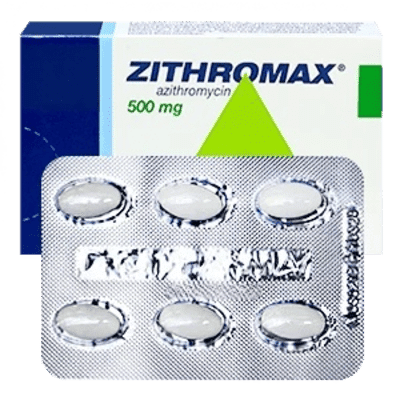The drug helped me cope with a urinary tract infection very well. The symptoms started to go away on the second day, although I finished the course completely. There were practically no side effects, only a little nausea on the first day.

Bactrim
Active ingredients: Sulfamethoxazole Trimethoprim- Quality products
- Support 24/7
- Fast delivery
What is it?
Bactrim is a combination antibacterial drug that includes sulfamethoxazole and trimethoprim. They act synergistically, blocking successive stages of folic acid synthesis in bacterial cells, which leads to their death. Due to this, Bactrim is effective against a wide range of bacteria, including some strains resistant to other antibiotics.
Composition
Bactrim contains two active substances, each of which plays an important role in the antibacterial activity of the drug. These components work synergistically, enhancing each others effectiveness and creating a strong therapeutic effect.
- Sulfamethoxazole is a sulfanilamide antibiotic that blocks the synthesis of folic acid in bacterial cells.
- Trimetoprim is an inhibitor of the bacterial enzyme dihydrofolate reductase, preventing the conversion of dihydrofolic acid to tetrahydrofolic acid.
- Additional substances - provide stability, taste and ease of use of the drug.
This combination makes Bactrim a powerful tool for combating infections resistant to monotherapy.
How to use?
To achieve the maximum therapeutic effect, Bactrim should be used strictly according to the doctors recommendations. The method of administration and dosage depend on the patients age, the nature of the infection and the severity of the condition.
- The drug is taken orally, usually after meals to reduce the risk of stomach irritation.
- The tablets are washed down with a sufficient amount of water to ensure adequate hydration.
- The course of treatment is usually from 5 to 14 days, but the duration may vary depending on the indication.
- For children, special forms of the drug with a lower dosage are used.
It is important to observe the interval between doses to maintain a stable concentration of the drug in the body and to avoid missing doses.
How does it work?
The mechanism of action of Bactrim is based on the combined effect of its active substances - sulfamethoxazole and trimethoprim. These components sequentially interfere with the metabolism of bacteria, disrupting their ability to synthesize vital folic acid.
Sulfamethoxazole inhibits the synthesis of dihydrofolic acid, which creates a deficiency of the key substance in the bacterial cell. Trimethoprim enhances this effect by blocking the next step - the conversion of dihydrofolic acid into the active form of tetrahydrofolic acid. This two-stage effect inhibits the growth and reproduction of bacteria, which leads to their death.
This combination is especially effective against bacteria resistant to single antibiotics and reduces the risk of resistance development due to the dual mechanism of action.
Indications
Bactrim is used to treat a wide range of bacterial infections. The drug is prescribed in cases where pathogens are sensitive to its active ingredients, and is effective in both acute and chronic diseases.
- Respiratory tract infections, including bronchitis, pneumonia and sinusitis.
- Urinary tract diseases, such as cystitis, pyelonephritis and urethritis.
- Skin and soft tissue infections, including abscesses and furuncles.
- Infectious processes of the gastrointestinal tract, such as bacterial diarrhea or typhoid fever.
- Prevention and treatment of infections in patients with weakened immunity, such as toxoplasmosis or pneumocystis pneumonia.
The drug is prescribed to both adults and children, taking into account age dosages and individual characteristics of the patient.
Contraindications
Despite its high efficiency, the use of Bactrim has a number of limitations. The drug is not recommended for use in situations where its use may cause harm or worsen the patients condition.
- Hypersensitivity to the components of the drug (sulfamethoxazole or trimethoprim) or other sulfonamides.
- Severe liver or kidney disease, accompanied by impaired function.
- Deficient glucose-6-phosphate dehydrogenase enzyme, which increases the risk of hemolytic anemia.
- Pregnancy and lactation, especially in the first trimester and during breastfeeding.
- Infancy up to 2 months (for liquid forms of the drug).
Before starting treatment, it is important to carefully assess the patients health and exclude contraindications in order to avoid possible complications.
Side effects
Like any medication, Bactrim can cause side effects, although not everyone experiences them. Most are mild to moderate in severity and go away after the course of treatment.
- Gastrointestinal: nausea, vomiting, diarrhea, decreased appetite, rarely - abdominal pain.
- Allergic reactions: skin rash, itching, urticaria, in rare cases - severe allergic conditions (eg, Stevens-Johnson syndrome).
- Hematological disorders: anemia, decreased levels of leukocytes or platelets.
- Nervous system: headache, dizziness, rarely - depression or insomnia.
- Other: increased sensitivity of the skin to sunlight (photosensitivity), sometimes - impaired renal function.
If any undesirable symptoms appear, it is recommended to immediately stop taking the drug and consult a doctor.
Frequently asked questions
Bactrim Reviews and Experiences
I used Bactrim as prescribed by my doctor for bronchitis. My breathing became easier after a couple of days, and my cough gradually went away. The only thing I noticed was a small rash on my skin, but the doctor said it was temporary.
Bactrim was prescribed to a child because of frequent sore throats. It is very convenient that there is a special form for children. The child took it without problems, and the temperature dropped by the morning of the next day. We are happy with the result.









